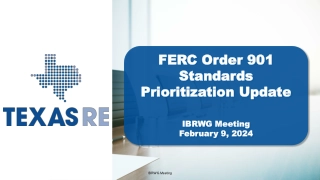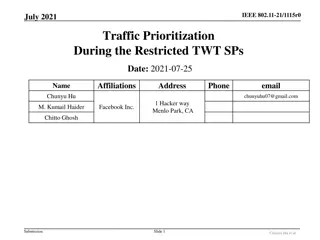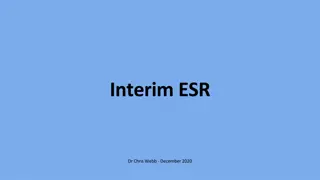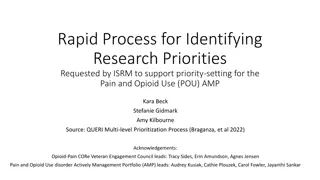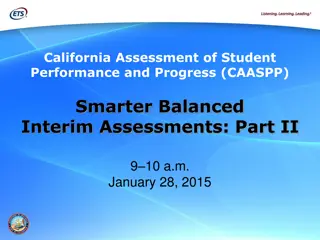
Equity-Based Interim Prioritization in Housing Support Programs
Learn about the goal and process of the Interim Prioritization (IP) Workgroup in enhancing racial equity within the Coordinated Entry for All (CEA) community queue for housing prioritization. Discover how formulas were selected and the approved YYA Interim Prioritization Formula implemented to improve equitable outcomes.
Download Presentation

Please find below an Image/Link to download the presentation.
The content on the website is provided AS IS for your information and personal use only. It may not be sold, licensed, or shared on other websites without obtaining consent from the author. If you encounter any issues during the download, it is possible that the publisher has removed the file from their server.
You are allowed to download the files provided on this website for personal or commercial use, subject to the condition that they are used lawfully. All files are the property of their respective owners.
The content on the website is provided AS IS for your information and personal use only. It may not be sold, licensed, or shared on other websites without obtaining consent from the author.
E N D
Presentation Transcript
CEA Interim Prioritization Overview Prepared by the King County Department of Community and Human Services, Performance Measurment and Evaluation January 23, 2019
Goal of CEA Interim Prioritization Workgroup The IP workgroup was tasked with quickly revising the formula used to identify the most vulnerable single adults, young adults, and families on the Coordinated Entry for All (CEA) community queue to be prioritized for housing so that the weekly lists are more racially equitable. To implement quickly, the interim formula identified by the IP workgroup must be based on currently available data (i.e., without reassessing individuals or collecting new data). 2
Increased equity in the prioritization scoring formula would look like: The likelihood of being prioritized for housing (i.e., appearing on the Top 40 list ) is more similar across racial groups. The proportion of people of color being prioritized for housing (i.e., appearing on the Top 40 list ) is more similar to the proportion of people of color being assessed via Coordinated Entry for All. Note that CEA has many other initiatives, including to expand and improve equity in access, diversify the assessor pool, enhance the flag review process, and ensure equitable referrals to housing. 3
How did the IP workgroup choose these formulas? DCHS data analysts identified triage tool and VI-SPDAT questions where people of color responded differently than white respondents (>5% difference plus or minus) and the question related to vulnerability (as defined by the community) Vulnerability: Increased likelihood that someone would be harmed or victimized or die while homeless. Increased likelihood that a person would not be able to secure and/or maintain housing without additional support. IP workgroup members ranked the questions based on their impact on a person s vulnerability. DCHS used this feedback to test new prioritization formulas that gave less weight to the VI-SPDAT and more weight to the factors identified by the workgroup. IP workgroup members reviewed the impacts of the different formulas on racial equity and voted on the formula that improved racial equity the most. 4
YYA Interim Prioritization Formula Approved: December 19, 2018 Implemented: December 28, 2018 Total Possible Points Old Scoring Formula IP Scoring Formula Prioritization Factors VI-SPDAT 96% 50% Length of time homeless 4% -- Homeless 1+ year(s) -- 33.33% History of Foster Care -- 16.67% Weight of the VI-SPDAT reduced and 2/3 of remaining points distributed to most severe response on homelessness chronicity and remaining 1/3 awarded if respondent spent time in foster care. 5
Family Interim Prioritization Formula Approved: January 15, 2019 Implemented: January 25, 2019 Total Possible Points Old Scoring Formula IP Scoring Formula Prioritization Factors VI-SPDAT 96% 50% Length of time homeless 4% -- Older child helps with childcare -- 12.5% Unsupervised children aged 12 or under -- 12.5% History of foster care -- 12.5% Pregnant household member -- 12.5% Weight of the VI-SPDAT reduced and remaining points equally distributed to households if children 12 or under are left unsupervised, if children help with child care, if the caregiver has a history of foster care, and if a household member is pregnant. 6

